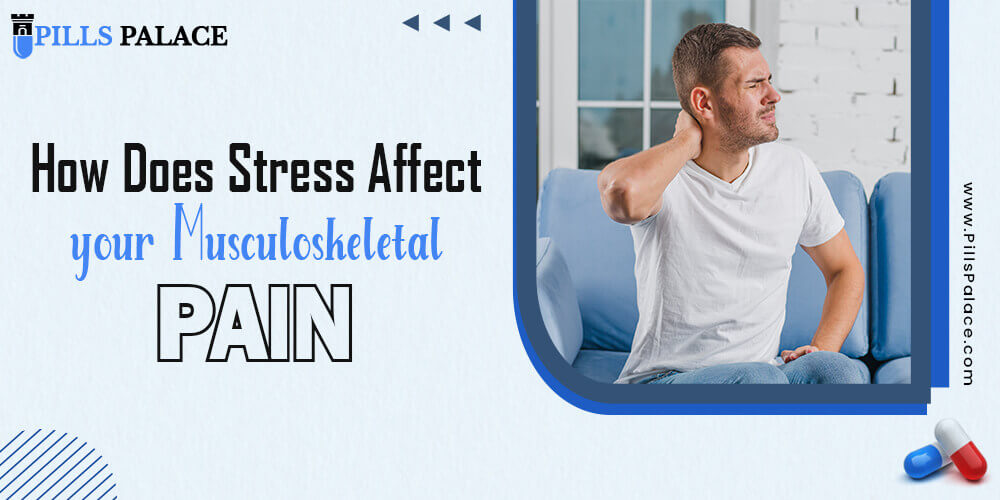The hustle and bustle of modern life brings with it constant stress, which can have a profound effect on our mental and emotional health as well as our physical health, resulting in musculoskeletal (muscle) discomfort that is common in people who are stressed.
Headaches, joint pain, and back pain are common symptoms due to the stress response causing muscle tension, inflammation, and posture changes. Recognizing this interdependence is important to promote overall health amidst a busy schedule.
Good understanding and bad stress
The fight-or-flight response triggered by stress is a survival mechanism that helps us deal with dangerous situations. But not all stress is the same. Stress that inspires, focuses and improves performance is called general stress. Distress, on the other hand, is persistent and all-consuming. It increases the risk of developing a variety of health problems, one of which is muscle and joint pain.
When your body senses stress, it releases chemicals like cortisol and adrenaline. These hormones help your body respond to immediate danger. Prolonged exposure to the hormones released in response to chronic stress can worsen muscle tension, inflammation, and discomfort.
How stress affects the body
The bones, muscles, joints, ligaments, and tendons that make up our musculoskeletal system perform an intricate dance that not only allows us to move, but holds us together as a whole. Our ability to traverse our environment gracefully and adaptively depends on this synergistic cooperation. But constant stress messes with this harmony, adding dissonance that resonates throughout the body.
Muscle tension is a major stress response at the musculoskeletal level. Because the body is constantly in a state of tension, muscles contract and become stiff as a natural response to chronic stress. This type of stress can result in pain and discomfort such as headaches, neck pain, and back pain. The muscles of the shoulders, neck, and back are the most damaged by the constant tension that stress puts on the body. The musculoskeletal system is designed to move with ease and grace, but chronic stress causes it to become stiff, exacerbating the external signs of internal discomfort.
A further aspect of how stress affects the musculoskeletal system becomes apparent when inflammation becomes an entry point for stress. Stress, when sustained over a long period of time, triggers an inflammatory response in the body. Inflammation is a natural defense mechanism, but if kept on constant alert, it can have adverse effects.
Joints, being the main components of the musculoskeletal structure, become vulnerable to chronic inflammatory attacks that can lead to the development of diseases such as arthritis. The unpleasant effects are manifested as joint pain and stiffness, providing physical evidence of a complex interplay between the mind’s stress messages and the body’s inflammatory response.
Our posture is an invisible architect of our body’s behavior and another silent victim of chronic stress. When we are under pressure, our muscles can contract and tighten, causing poor posture. Musculoskeletal discomfort is often the result of altered posture, a subtle but powerful effect of prolonged stress.
The protagonists in this story are the neck, shoulders and lower back, which suffer from poor posture as stress relentlessly impacts our lives. When the body distorts under the weight of tension, these weak areas become painful – a sign of strain on the musculoskeletal system.
Stress affects musculoskeletal pain. It intricately weaves itself into the body’s complex web of natural healing mechanisms, impairing them at every turn. Constant stress impairs the body’s incredible ability to heal itself. The body’s resources are diverted from healing injuries to managing the chronic stress response.
This delayed healing is a major obstacle because it lengthens recovery times and exacerbates underlying musculoskeletal problems. Constant stress turns the body into a battlefield, leaving scars from past trauma, both physical and mental, that make it harder to regain health and balance.
To effectively manage and reduce pain, it is essential to fully understand the various effects that stress has on the musculoskeletal system. A comprehensive strategy is needed to address both the causes and symptoms. With a deeper understanding of the relationship between stress, inflammation, posture, and the body’s natural healing mechanisms, you can take steps towards overall health.
What is Stress Management?
Stress management is essential to breaking the cycle of chronic stress and its effects on musculoskeletal health. Stress management involves learning and practicing ways to cope with stress in healthy ways. One way is to adopt a healthier lifestyle by making changes to your eating, sleeping and exercise habits. These can benefit your general health and reduce the harmful effects that stress has on your body.
Musculoskeletal discomfort is a common symptom of stress, but you may benefit from regularly practicing relaxation techniques. Relaxation techniques such as deep breathing, meditation and yoga can help your body cope better with stress by reducing muscle tension and calming the mind.
To deal with stress, use relaxation wellness products such as Pain o Soma 500, Pain o Soma 350 or the Pillspalace Method. Some people need more help than just making lifestyle changes and learning relaxation techniques as part of their stress management plan. Pain o Soma 500 and Pain o Soma 350 are examples of medications that may help with this.
Both Pain o Soma 500 and Pain o Soma 350 contain the muscle relaxant carisoprodol, which is prescribed to treat musculoskeletal pain caused by mental and physical stress. They relieve pain by stopping signals sent from the nerves to the brain. Due to the potential for abuse and adverse effects, these medications should only be used under a doctor’s supervision.
Natural stress management has become increasingly popular in recent years as an alternative to medication, and Pillsplace emphasizes a holistic approach that takes into account not only physical health, but also mental and emotional health. This can involve a combination of different therapies, lifestyle changes and the use of mindfulness techniques.
Conclusion
The first step in managing stress-related musculoskeletal discomfort is to recognize the complexities of the relationship between the two. A more balanced, pain-free life may be achieved by recognizing the difference between beneficial and harmful stress, utilizing stress management practices, and considering pharmacological treatments such as Pain o Soma 500 and Pain o Soma 350. Embracing a relaxed, healthy attitude, such as that recommended by Pillsplace, can further enhance the effectiveness of stress management measures and support both physical and emotional health.





